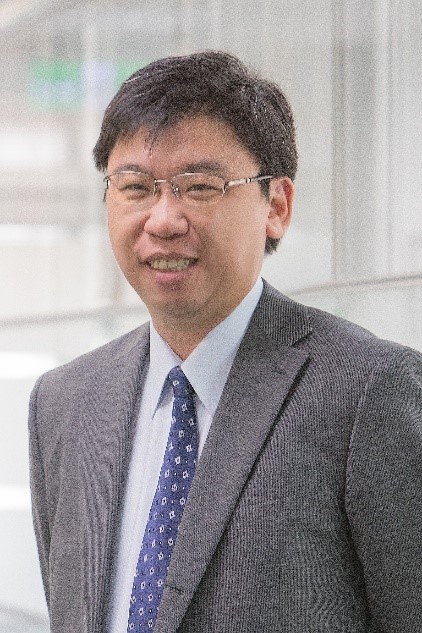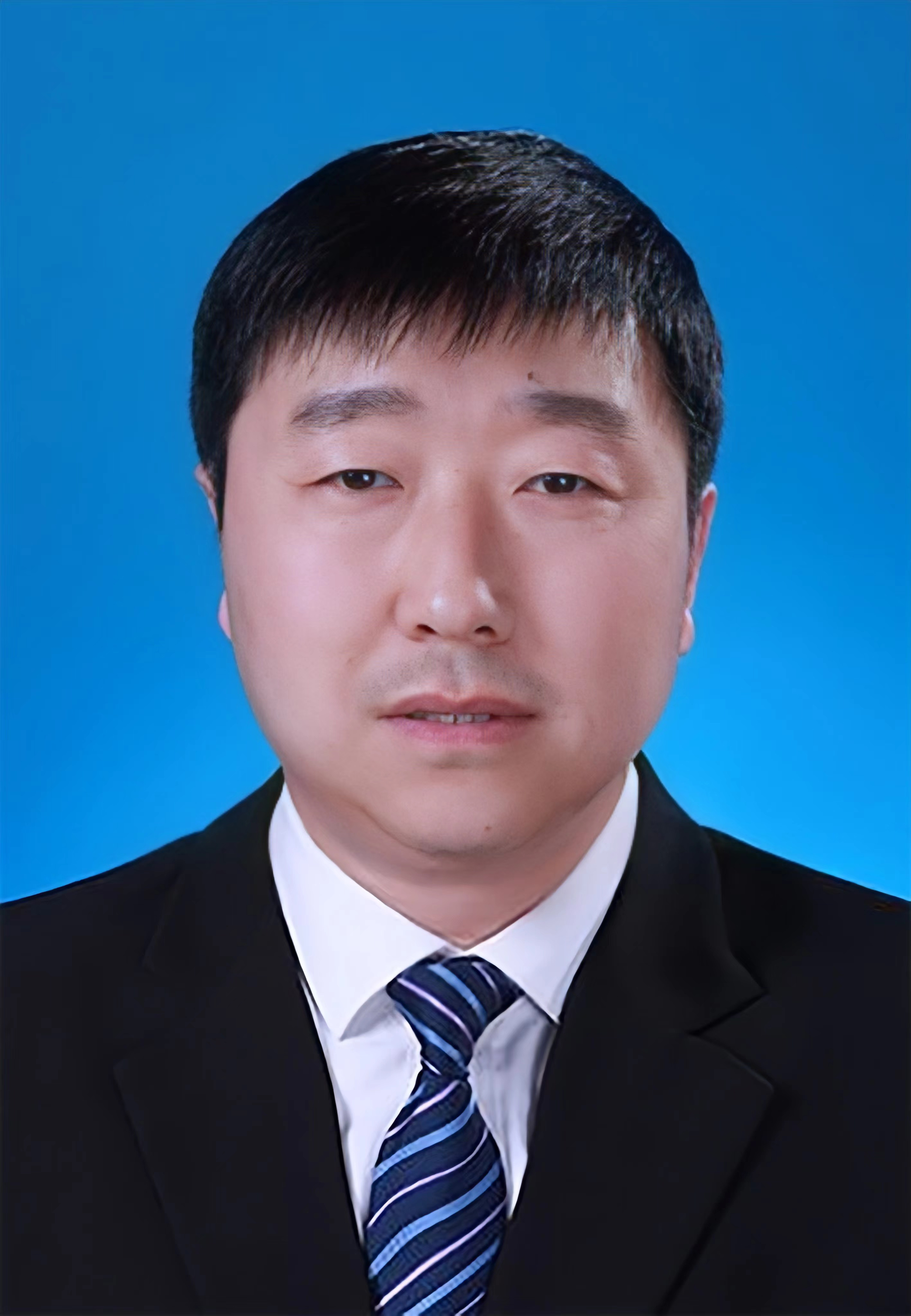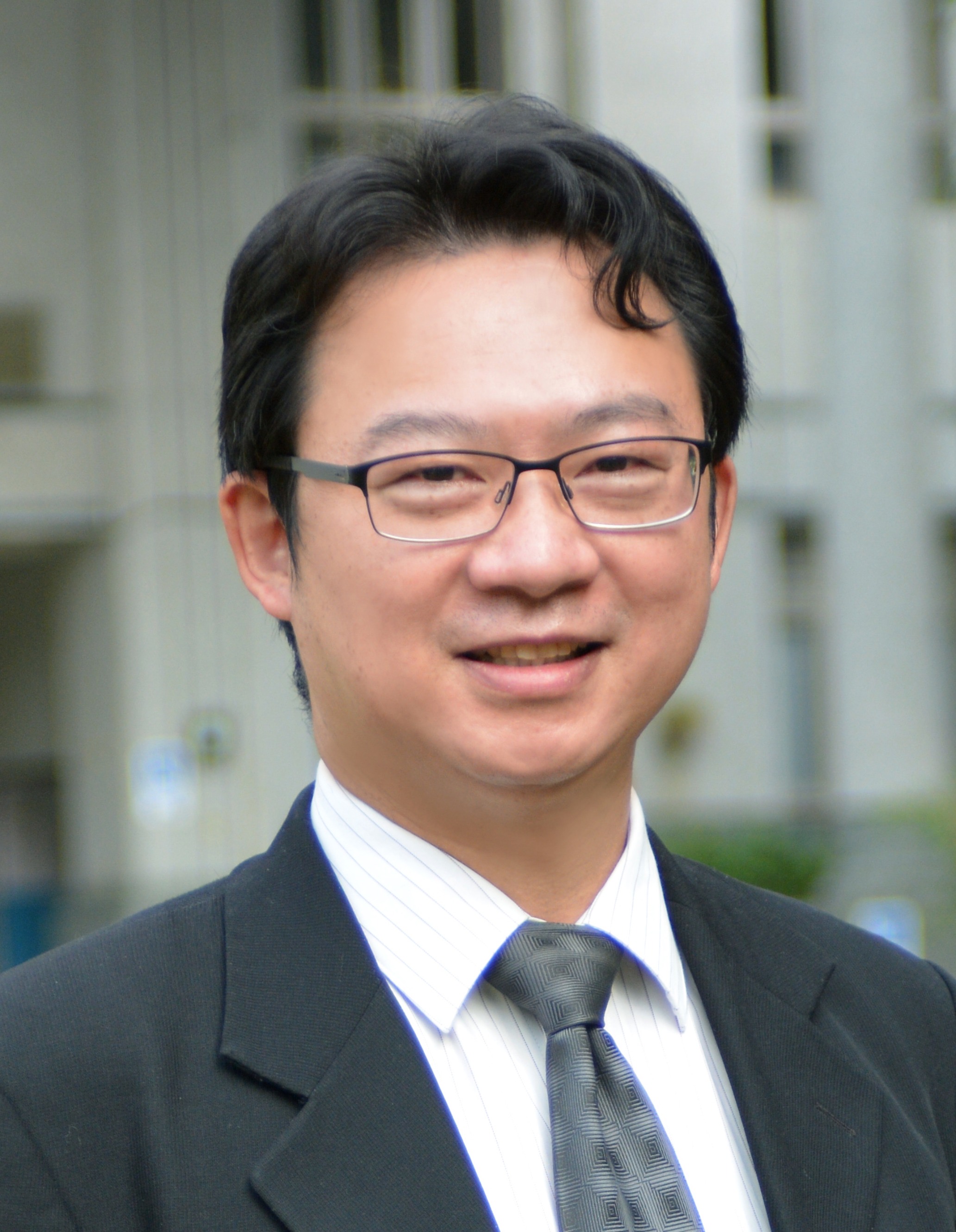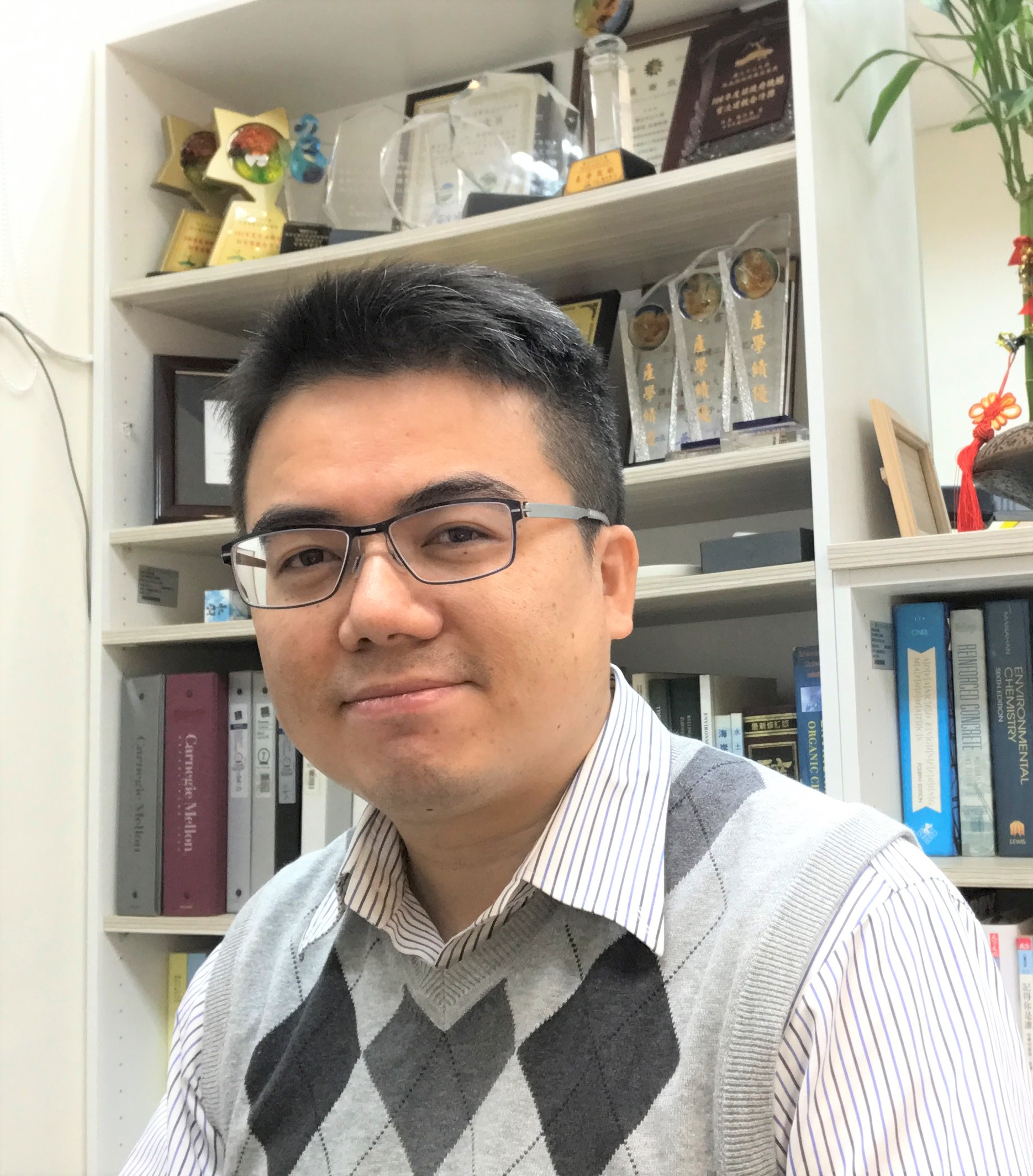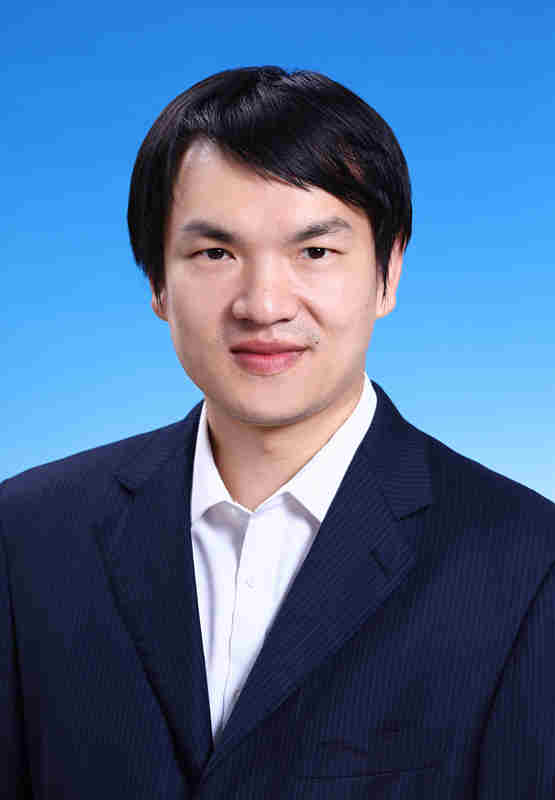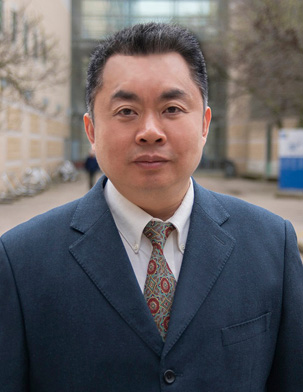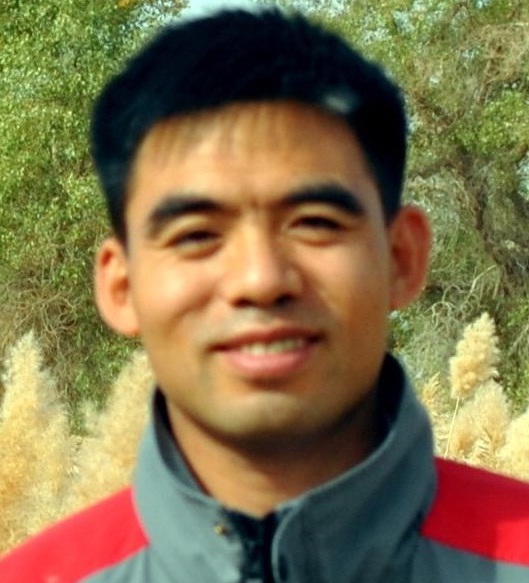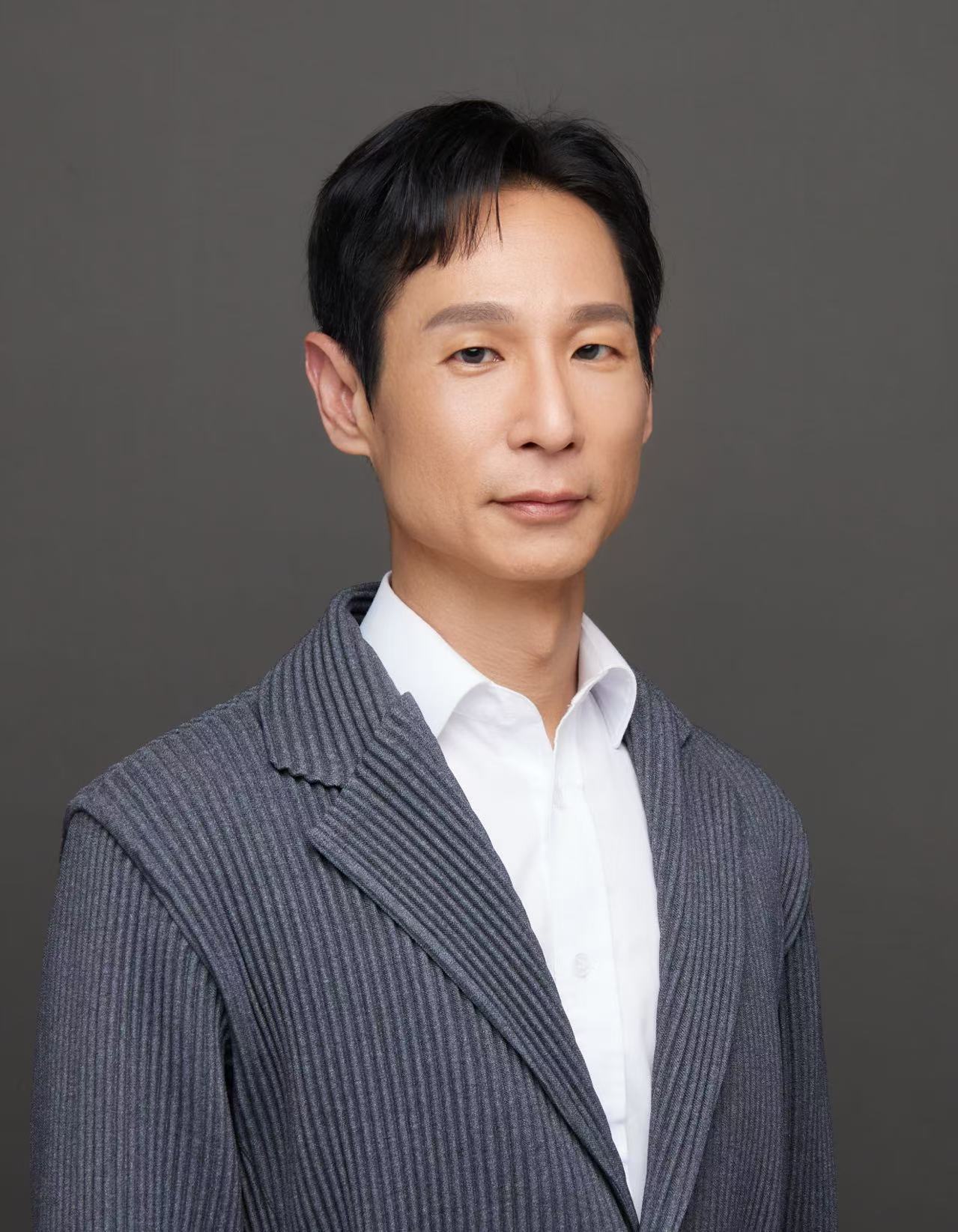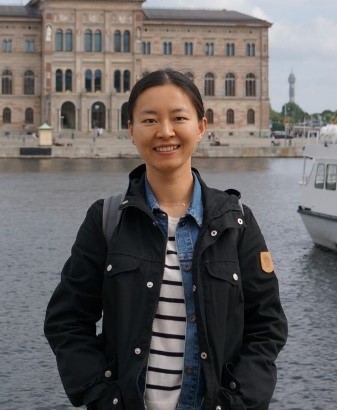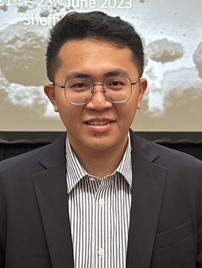Invited Speakers
Prof. Chih-Sheng Ku
Department of Civil Engineering, I-Shou UniversitySpeech Title: Investigation and Assessment of a Multiple Liquefied Site
Abstract: Liquefaction-induced sand boils were observed in the Sinhua District, Tainan during the 1946 Xinhua Earthquake. Liquefaction phenomena were observed in the same area following the 2010 Jiasian Earthquake. More re-liquefaction sand boils occurred after the 2016 Meinong Earthquake. The locations of sand boil craters induced by the Taoyuan and Meinong earthquakes were overlapped. After the Jiasian Earthquake in 2010, borehole drilling and cone penetration tests were conducted in the region. Similar investigations were repeated following the Meinong Earthquake in 2016. This study examines the soil layer characteristics and evaluates the liquefaction potential based on the CPT sounding at different time periods.
Prof. Meng-Wei Wan
Department of Environmental Engineering and Science, Chia-Nan University of Pharmacy and ScienceSpeech Title: The optimization study of oxidative desulfurization using polyoxometalate-based phase-transfer catalysts immobilized on magnetic particles
Abstract: In this study, a transition metal catalyst (phosphotungstic acid) and quaternary ammonium salts (tetramethylammonium chloride) immobilized on magnetic particles (iron oxide), knowing as composite catalyst, were synthesized. This composite catalyst was used to conducted an ultrasonic-assisted oxidation test for the pure organic sulfur compounds (Dibenzothiophene, DBT).
The premilitary results indicated that the composite catalyst has the best oxidation efficiency while the ratio of polyoxometalate/phase transfer catalyst on iron oxide is 3:1 (0.6 g: 0.2 g). When the loading ratio is maintained at 3:1, the oxidation effect is significantly improved after the dosage is increased five times (3.0 g: 1.0 g), and the DBT oxidation efficiency reaches 76.6%. Moreover, the amount of hydrogen peroxide added has a significant effect on the reaction effect. When the volume ratio of hydrogen peroxide to DBT is 2:1 (12 mL: 6 mL), the best DBTO oxidation efficiency of 54.5 ppm can be obtained. However, excessive addition leads to inhibition of the reaction.
The oxidation experiment optimized by Box-behnken Design, the experimental parameters obtained are: hydrogen peroxide: DBT = 18:6, catalyst dosage 0.8 g, reaction time 10 minutes, which can achieve the best oxidation efficiency, and the DBT oxidation rate reaches 100%. Moreover, in the recovery test of this composite catalyst after the reaction, the recovery efficiency of the composite catalyst in the first recovery was about 50%, and after the second and third recovery after the oxidation reaction, the recovery efficiency can reach 70-80%.
This composite catalyst illustrated a desulfurization efficiency superior to that of traditional methods in both treated and untreated oil products, reaching 46.2% and 42.2% desulfurization efficiency respectively, indicating that it has good application potential and practicality for medium and low sulfur content oil products.
Prof. Baochang Liu
College of Construction Engineering, Jilin UniversitySpeech Title: Development of high-performance polycrystalline diamond compact cutters for oil and gas drilling
Abstract: In this paper, the effects of initial diamond particle sizes on the mechanical properties of PDC (Polycrystalline Diamond Compact) cutters for oil and gas drilling were systematically investigated. The microscopic features of eight single-grain-size diamond powders were analyzed. The microstructures of the PDC cutters prepared from different grain sizes of diamond powders were characterized. The mechanical properties of coarse-grained PDC including hardness, fracture toughness, abrasion resistance, impact toughness and thermal stability were tested. Cold compaction experiments were performed on diamond powders with different single and double grain size formulations. Three kinds of double-grain-size formulations were determined through the analysis of a large number of tests on the vertical turning lathe (VTL) rock-cutting performance of PDC cutters. The double-layer structured PDC cutters were designed, with fine-grained diamond as the upper layer and coarse-grained diamond as the lower layer to achieve balanced wear-resistance and impact resistance. On the basis of the three double-particle-size formulations, combined with the influence of different filler particle ratios on the performance of PDCs with different main grain size systems, the trimodal particle size formulations were further designed. The optimal formulations with three different performance orientations were obtained under the experimental system of the present study, i.e. wear-resistant formulation, impact resistant formulation and balanced formulation.
Distinguished Prof. Ku-Fan Chen
Department of Civil Engineering, National Chi Nan UniversitySpeech Title: Remediation of Trichloroethylene (TCE)-Contaminated Groundwater Using Electrochemically Activated Persulfate
Abstract: In this study, electrochemical activation of persulfate using iron electrodes is applied to treat trichloroethylene (TCE) in groundwater. The effects of various factors, including current density, persulfate concentration, and anion type and anion concentration, on TCE oxidation are evaluated. In addition, a persulfate tablet, a long-lasting persulfate release material, is combined with the electrochemical activation system for in situ groundwater remediation. At persulfate concentrations of 4.2 10-3 to 4.2 10-2 M, TCE (4 10-4 M) removal reaches 98.4 to 100% at current densities of 0 to 12.5 mA/cm2 during 60 min of reaction. Additionally, cis-1,2-dichloroethylene is detected during the experiments, which indicates that the reductive dechlorination of TCE occurs in the systems. TCE degradation fits well with pseudo-first-order kinetics. The rate constant of TCE removal increases with increasing current density and persulfate concentration. The presence of 4.210-2 M of Cl- accelerates the degradation of TCE while high concentrations of Cl- and HCO3- (4.2 10-1 M) result in the retardation of TCE removal. HCO3- inhibits TCE degradation more significantly than Cl-. The combination of a persulfate tablet with electrochemical activation achieves >99% TCE removal during 360 min of reaction, which demonstrates the effectiveness of the novel integrated system. Electron paramagnetic resonance analysis confirms the presence of ∙OH, SO4-∙, Cl∙, and ∙CH3 in the system, indicating that TCE is degraded by ∙OH and SO4-∙. The developed electrochemically activated persulfate system is suitable for in situ or on-site remediation of TCE-contaminated groundwater.
Prof. Wei-Hsiang Chen
Professor, Chair, and Associate DeanInstitute of Environmental Engineering, College of Engineering,
National Sun Yat-sen University
Speech Title: Degradation of benzylamines during anaerobic biological treatment and formation of nitrosamines during subsequent chloramination
Abstract: With the growing demand for water reuse, wastewater treatment facilities must effectively manage emerging contaminants and their byproducts to ensure public safety. Excessive use of benzalkonium chloride disinfectants has raised concerns due to the resulting accumulation of benzylamines, such as N-methylbenzylamine (MBA) and N,N-dimethylbenzylamine (DMBA), in wastewater. In response to increasing emphasis on energy efficiency and carbon reduction, biological anaerobic treatment is gaining popularity. This study investigated the biodegradation of MBA and DMBA under anaerobic conditions, their influence on toxic byproduct formation during subsequent chloramination, and their impact on bioreactor performance, degradation pathways, and microbial community structure. Our findings revealed that anaerobic treatment maintained overall performance despite the presence of benzylamines. However, MBA exhibited significant resistance to biodegradation, while DMBA underwent substantial transformation. Chloramination of MBA-treated effluent resulted in nitroso-MBA formation with a 1% molar yield. In contrast, chloramination of DMBA-treated effluent led to notable N-nitrosodimethylamine (NDMA) formation, with molar yields reaching 10 ± 1% and 97 ± 7% of the influent and residual DMBA concentrations, respectively. Microbial community analysis showed distinct differences in the DMBA reactor compared to the MBA and control reactors, supporting proposed degradation pathways and microbial involvement. To further assess environmental relevance, we collected real water samples from a real wastewater treatment plant in southern Taiwan. Our analyses confirmed the presence of these contaminants and their transformation products in the real treatment processes. Interestingly, preliminary results suggest that aerobic biological treatment may be more effective in degrading benzylamines and suppressing nitrosamine formation. Ongoing investigations aim to elucidate the underlying mechanisms behind these observations.
Prof. Yen-Ping Peng
Institute of Environmental Engineering, National Sun Yat-sen UniversitySpeech Title: Enhanced Hydrogen Generation by Photoelectrochemical Hydrolysis of Ammonia Borane
Abstract: Ammonia borane (AB) is recognized as a stable and safe hydrogen storage material, which renders it particularly advantageous for the advancement of a hydrogen economy. This study successfully demonstrates hydrogen production through the catalytic hydrolysis of AB utilizing cuprous oxide deposited on titanate nanotube arrays (Cu2O/TNAs) within a photoelectrochemical (PEC) system. The synthesis of Cu2O/TNAs was accomplished through the square wave voltammetry electrodeposition (SWVE) technique, followed by comprehensive characterization of their physical and chemical properties. The enhancement of PEC performance can be attributed to the high separation efficiency of electron-hole pairs, a result of the deposition of Cu2O nanoparticles. This phenomenon facilitated hydrogen production during the catalytic hydrolysis of AB. Experimental results indicated that the integration of Cu2O/TNAs with the PEC system constituted the most effective approach for hydrogen generation via catalytic hydrolysis of AB. This efficacy is derived from both the deposition of Cu2O nanoparticles and the synergistic interaction between photocatalysis (PC) and electrocatalysis (EC). Furthermore, a detailed mechanism and pathway for hydrogen production via catalytic hydrolysis of AB using Cu2O/TNAs within the PEC system are proposed to elucidate the involved redox reactions. In conclusion, this research provides substantial contributions to the application of high-performance photocatalysts and technologies for hydrogen production, reinforcing the significance of advancing energy solutions.
Prof. Mengkai Li
State Key Laboratory of Environmental Aquatic Chemistry, Research Center for Eco-Environmental Sciences, Chinese Academy of SciencesSpeech Title: Organic Pollutant Degradation in Water by Vacuum Ultraviolet: Dosimetry and Enhancement Pathways
Abstract: Vacuum ultraviolet (VUV) radiation efficiently generates hydroxyl radicals (HO•) without chemical additives, enabling rapid oxidation of organic pollutants in water. With growing interest in ultrapure water treatment, VUV has gained attention for its ability to degrade trace total organic carbon (TOC). However, two critical challenges hinder its practical application. 1)Low energy efficiency: The photoelectric conversion efficiency of 185 nm VUV in low-pressure mercury lamps is typically <5%, leading to high energy consumption. 2)Lack of dosimetry: The absence of reliable methods to quantify 185 nm irradiance within reactors compromises system reliability and standardization. This study identifies a key limitation in VUV energy utilization: HO• radicals, confined near the lamp surface due to mass transfer constraints, recombine into low-activity hydrogen peroxide (H₂O₂). We propose chemical (e.g., reagent addition) and physical (e.g., hydrodynamic optimization) strategies to suppress H₂O₂ formation, thereby enhancing VUV efficacy. Notably, micro/nano-bubble aeration—a physical approach—significantly improves pollutant removal by mitigating H₂O₂ accumulation. Furthermore, based on H₂O₂ generation kinetics, we develop a novel in situ 185 nm dosimetry method under controlled hydrodynamic conditions, ensuring process reliability. Our work provides theoretical and methodological foundations for optimizing VUV-based water treatment systems.
Prof. Juan Manuel Mayoral
Institute of Engineering, National University of MexicoSpeech Title: Seismic Performance of Tunnel-building-bridge Systems in Urban Environments
Abstract: Seismic performance of tunnels during earthquakes in densely populated areas requires assessing complex interactions with existing infrastructure such as bridges, metro stations facilities, and low- to medium-rise buildings. This has become more challenging because the distance between surface and underground structures has been shortened to optimize the urban environment functionality. This is even more important in transit transfer stations, which usually comprise tunnels, bridges, and buildings, in which wave propagation interference is exacerbated. Key insights gathered from instrumentation of actual structures and numerical parametric studies are presented. A metro station currently under construction, located near by a 5-story masonry building, was selected as a test site for seismic instrumentation. The site is in Mexico City, in the so-called hill zone, where very cemented sandy silt and silty sands is found. An arrangement of five accelerometers were deployed, to assess free-field, near-field, and building seismic response. Some of the results gathered from the seismic instrumentation after recording five low- to high-magnitude earthquakes from both interface and intraplate events are commented. Major findings of the parametric studies are also highlighted. Three-dimensional finite difference models were developed using the software FLAC3D. Initially, the static response of the tunnel was evaluated accounting for the excavation technique. Then, the seismic performance evaluation of the tunnel was carried out, computing ground deformations and factors of safety, considering soil nonlinearities. Good agreement was observed between predicted and observed damage during post-event site observations during actual earthquakes. Once the soundness of the numerical model was established, a numerical study was undertaken to investigate the effect of frequency content in tunnel-induced ground motion incoherence for tunnels built in cemented stiff soils, considering both intraplate and interplate earthquakes, to assess the effect of differences in their frequency content, duration, and intensity. Multiple scenarios were considered in the numerical study, and the relative distances among the structures were varied to investigate both detrimental and beneficial interaction effects, and to identify the zone of influence where this interaction leads to ground motion variability.
Prof. Jun Cao
Ph.D., P.Eng., ProfessorDept. of Mechanical, Industrial, and Mechatronics Engineering
Toronto Metropolitan University
Speech Title: Computational Analysis of Tornado Disaster towards a Multi-Building Configuration
Abstract: Computer-aided simulation of tornadoes impacting buildings is an efficient and cost-effective method for studying tornado dynamics. A key challenge in this field is developing physically sound and computationally efficient boundary conditions for tornado scenarios. Building on the success of the immersed-boundary (IB) strategy, this research introduces a novel IB-based framework for investigating tornadic wind effects.
Applying the “relative motion” principle, a tornado approaching a building is reinterpreted as a “virtual” translation of the building - moving with a velocity equal in magnitude but opposite in direction to the tornado’s translation - toward a “virtually pinned” center of purely rotational airflow. This approach simplifies the outer boundary velocity description of the tornado domain by considering only the rotational component, which remains time-independent as long as the boundary is sufficiently far from the building. As a result, computational resources are conserved by eliminating the need for continuous boundary velocity updates. The IB method is then employed to simulate the “virtually moving” building within this framework.
Utilizing the IB strategy alongside the large eddy simulation (LES) model, a computational analysis of tornadic wind loadings on a multi-building configuration was conducted. The findings provide valuable numerical insights that can enhance future simulations of tornadic wind effects.
Prof. Yi-Jao Chen
Department of Architecture, National University of KaohsiungSpeech Title: A BIM-Based Study on Embodied Carbon Analysis for Building Structure
Abstract: In light of growing global concerns about climate change, reducing greenhouse gas emissions has become a critical focus. Taiwan has pledged to achieve net-zero emissions by the middle of the century, highlighting the construction sector's vital role in this effort. This study integrates Building Information Modeling (BIM) with Life Cycle Assessment (LCA) to develop effective strategies for reducing embodied carbon in building structures. Traditional LCA approaches face challenges due to inconsistent data sources, varied methodologies, and intensive labor requirements. By reviewing international carbon assessment standards, this research identifies a locally appropriate carbon database and builds an automated evaluation system using Autodesk Revit and Dynamo. The system enhances efficiency, reduces human error, and minimizes time and labor costs. A case study involving an activity center evaluates the carbon reduction potential of two commonly used structural materials in Taiwan—reinforced concrete and steel structures. The analysis also incorporates a carbon pricing mechanism, converting emissions reductions into economic terms for clearer decision-making. Results demonstrate the system’s effectiveness in rapidly assessing carbon performance and cost benefits, offering practical support for low-carbon material selection and policy planning in the early design phase.
Prof. Xin Zhang
Aerospace Information Research Institute, Chinese Academy of SciencesSpeech Title: Evolution Analysis of the Yellow River Delta Wetland Supported by Remote Sensing Data
Abstract: The Yellow River Delta is the most complete, extensive, and youngest wetland ecosystem in China's temperate zone. In recent years, with the increasing frequency of environmental changes and human activities, local wetland resources have continued to shrink and degrade. The study proposed using object-level sample migration technology based on vector similarity to achieve wetland thematic classification mapping. Based on the landscape ecological risk model and Sen+Mann-Kendall trend analysis, this study evaluated the local ecological security status and spatiotemporal pattern under the background of natural wetland degradation in the Yellow River Delta. Based on dense observations, it was found that the wetland area in the Yellow River Delta showed four phased rules. Among them, the natural wetland shrank the most drastically from 1999 to 2009, reflecting the inadequacies in wetland management and protection during that period. In terms of space, influenced by factors such as artificial landscape expansion, the centroid of natural wetlands moved towards the sea, their living space has been massively compressed.
Prof. Yoshihiro Hamaguchi
Department of Economics, Faculty of Economics, Hannan UniversitySpeech Title: Does trade liberalization contribute to sustainable tourism via industrial advancement?
Abstract: The expansion of tourism mobility associated with globalization has promoted tourism development, but it has also caused tourism pollution and led to the intensification of carbon in the tourism industry. Environmental tourism policies being introduced into the tourism industry do not necessarily lead to realizing sustainable tourism. Here, the industrial upgrading of the manufacturing sector may contribute to sustainable tourism through its ripple effects. Using an R&D-based growth model with heterogeneous firms in the tourism sector including tourism mobility, we investigate the impact of trade-environment tourism policies on economic growth, entry and exit, tourism consumption, and pollution emissions. The results of the analysis show that it is difficult to achieve sustainable tourism through a single policy, as each policy results in a trade-off between the economy, the environment, and tourism. Trade liberalization improves productivity and economic growth through a cleansing effect, but it also causes pollution to increase and tourism to decrease. In this case, reducing pollution and increasing tourism through a tourism tax cut would mitigate the negative effects of trade policy, although it would harm economic growth. An environmental tax would encourage pollution reduction in exchange for a deterioration in productivity. Therefore, we should aim for sustainable tourism through a policy mix of trade liberalization under the policy of environmental tax hikes and tourism tax cuts.
Prof. Hyunook Kim
Department of Environmental Engineering, University of SeoulSpeech Title: Microplastics in commercial laundry detergents and conditioners.
Abstract: Primary microplastics (MPs), man-made tiny plastic particles less than 5 mm in size, used to be added to various consumer products, including commercial laundry detergents and conditioners. In particular, primary MPs were added to laundry detergents and conditioners as exfoliating agents, emulsion stabilizers, or fragrance carriers. During the washing process, these MPs can be released into wastewater systems, eventually making their way into aquatic environments. Due to public concern about the potential health risk of MPs on the environment and human beings, a few countries (e.g., Korea, Taiwan, China, and EU since 2017, 2018, 2021, and 2023 respectively) have banned the addition of any artificial MPs in laundry detergents and conditioners. In this study, we explore the sources and impacts of MPs in the commercially available laundry detergents and conditions; four laundry detergents and four conditioners were purchased from a market. Since the analysis of MPs in the products is commonly performed using a micro-FT-IR spectrometer, which has a limited capability of identifying particles smaller than 4-50 micro-m, a micro-Raman spectrometer has been used in this study. In short, 610-20000 MPs smaller than 50 micro-m were identified by the micro-Raman per 1 mL in various laundry detergents. However, only a few MPs could be detected when the micro-FT-IR based method was applied. Therefore, it was concluded that the micro-FT-IR based methodology to examine laundry products should be replaced by the one based on micro-Raman spectrometry.
Dr. Héctor Aroquipa Velásquez AND MSc. Álvaro Hurtado
Dr. Héctor Aroquipa VelásquezSchool of Civil Engineering Universidad Nacional Autónoma de Tayacaja (UNAT), Peru
MSc. Álvaro Hurtado
Instituto de Investigación Científica, Universidad de Lima, Peru
Speech Title: Strategies for Seismic Rehabilitation and Economic Viability for Resilience in Peru: Evaluating Disaster Risk Reduction Programs through Incremental Seismic Retrofitting
Abstract: This study proposes an advanced methodology to evaluate the efficiency of Disaster Risk Reduction (DRR) programs through a cost-benefit analysis of incremental seismic retrofitting interventions applied to an existing building portfolio in Peru. The methodology integrates probabilistic seismic risk analysis with financial indicators such as Net Present Value (NPV), Internal Rate of Return (IRR), and Cost-Benefit ratio, calculated at both market and social prices. This approach allows for a more precise evaluation of the economic and social feasibility of seismic interventions through incorporation of incremental seismic retrofitting strategies, maximizing infrastructure resilience against high-intensity seismic events. The methodological approach is based on the concept of Intelligent Circular Resilience, which encompasses three essential stages: risk understanding, mitigation, and response to seismic risk. These stages enable the identification and addressing of deficiencies in risk knowledge, treatment, and coordination among involved stakeholders. Different levels of structural intervention are proposed for school buildings, considering the optimal distribution of resources and maximum repair time as critical variables in the decision-making process. The results show that interventions unviable under market prices, such as reinforcing rural schools, become feasible with social prices. This underscores the importance of social value in DRR and equity in decision-making for vulnerable populations. Recommendations for DRR policies in Peru focus on structural improvements, community engagement, and institutional coordination to foster resilience.
Prof. Jenn Fang Su
Department of Chemical and Materials Engineering, Chang Gung UniversitySpeech Title: Fabrication of High-Flux Asymmetric Polyethersulfone (PES) Membranes with Perm-selectivity of Nitrate ions
Abstract: In this presentation, a series of asymmetric polyethersulfone (PES) membranes are introduced for the wastewater treatment applications. Firstly, the effects of different additives during membrane preparation on the morphologies and physical properties of fabricated membranes are discussed. It is found that the asymmetric membranes with three-dimensional pore networks in PES matrix without the presence of macrovoids can be achieved under optimal loading of water or polyvinylpyrrolidone (PVP) additives using non-solvent induced phase separation (NIPS) process. The resulted PES membranes exhibit a remarkable water permeation flux and a BSA rejection, which are suitable for ultrafiltration. Secondly, the synthesized PES membranes can be utilized as ion-selective membranes to concentrate the nitrate ions in water. Our results demonstrated that the high selectivity of nitrate ions over fluoride ions and sulfate ions can be obtained at low applied potential less than 3 V. The collected nitrate ions in water are further converted to ammonia through electrochemical reduction process, offering a promising avenue to address the environmental impacts associated with nitrate-containing wastewater and reduce the energy intensity as well as the carbon footprint linked to the traditional Haber-Bosch method for producing ammonia.
Prof. Wei-Fan Kuan
Department of Chemical and Materials Engineering, Chang Gung UniversitySpeech Title: Sustainable Battery Recycling via Direct Regeneration of Cathode Materials
Abstract: Lithium iron phosphate (LiFePO4, LFP) is a widely adopted cathode material in lithium-ion batteries due to its intrinsic thermal stability, safety, and long cycle life. However, repeated charging and discharging cycles cause the lithium depletion (delithiation) and structure degradation, ultimately resulting in diminished battery performance and the accumulation of spent battery wastes. Conventional recycling methods, such as pyrometallurgy and hydrometallurgy, present significant limitations: pyrometallurgical processes are energy-intensive due to high-temperature smelting, while hydrometallurgical approaches rely on corrosive reagents and involve complex separation steps to recover high-purity precursors. Although effective in the short term, these methods are not conducive to achieving a closed-loop, environmentally sustainable battery economy. In this study, we explore a direct regeneration strategy for the recovery of spent LiFePO4. This approach restores the electrochemical activity of the degraded material via relithiation and defect restoration, without disrupting its original crystal structure. Our findings show that approximately 70% of the original electrochemical performance can be restored through this method, highlighting its potential as a cost-effective and sustainable solution for lithium-ion battery recycling.
Prof. Ching-Lung Chen
Department of Safety, Health and Environmental Engineering, Ming Chi University of TechnologySpeech Title: Electrocatalytic Nitrate Conversion to Dinitrogen through Bimetallic Catalysts
Abstract: Elevated levels of nutrients in aquatic environments, a phenomenon known as eutrophication, are a growing worldwide concern. This issue is primarily intensified by the excessive application of both naturally derived and artificially produced fertilizers in agriculture, alongside the release of industrial byproducts containing nitrates into water systems. Addressing this widespread contamination necessitates the development of novel approaches for eliminating nitrates from polluted water. One promising avenue involves the use of specialized electrocatalysts featuring unique atomic arrangements. This research explored the creation of dual-metal electrodes composed of palladium and copper. Specifically, these Pd/Cu electrodes were prepared with varying durations of palladium coating, ranging from one to three minutes, to assess their effectiveness in reducing nitrate. The physical and chemical properties of these electrodes, including their morphology, elemental makeup, and atomic arrangement, were thoroughly investigated using a suite of analytical methods. X-ray diffraction analysis confirmed the creation of a combined Pd/Cu material. Furthermore, transmission electron microscopy revealed the presence of tiny, evenly spread palladium particles on the copper substrate. X-ray photoelectron spectroscopy corroborated the presence of palladium in its elemental state and copper in its oxidized form, further supporting the formation of the alloy. Electrochemical tests demonstrated that the Pd/Cu electrode exhibited a notably enhanced capacity for electrochemical nitrate reduction compared to pure copper, as evidenced by a clear peak indicating nitrate conversion. Notably, the Pd/Cu electrode demonstrated almost complete nitrate removal and a high selectivity towards the production of nitrogen gas at a fixed current density. These results underscore the potential of this electrocatalytic strategy for purifying water by removing nitrates, offering a viable solution to the critical environmental challenge of nitrate pollution.
Assoc. Prof. Qian Wang
Department of Environmental Science and Engineering, Guangdong Technion – Israel Institute of TechnologySpeech Title: Organophosphate Removal from Tannery Wastewater by the Fenton Process and Its Combination with UV/Ozonation
Abstract: Organophosphate is widely used in tannery industry as tanning agents and fire retardants, resulting in organophosphate-rich industrial wastewater. However, its removal is challenging due to the refractory properties. The Fenton process, a widely applied advanced oxidation processes, is robust to remove refractory organic pollutants. This study investigated the efficiency of the Fenton process and its combination with ultraviolet (UV) radiation or ozonation (i.e., Fenton/UV or ozonation-Fenton) for the removal of organophosphate in real tannery wastewater. The results showed that an intermittent dosing of the Fenton reagents was more effective than one-time dosing, and 83% of organophosphate was removed by the Fenton process at 3 mM Fe2+ + 6.66 mM H2O2 (a cost-effective chemical dose in practice). The organophosphate removal efficiency was augmented with increasing chemical dose and it was as high as 99% at 15 mM Fe2+ + 30 mM H2O2. Incorporation of UV radiation in the Fenton process improved the organophosphate removal efficiency, mainly due to the synergistic interaction among UV and the Fenton reagents which could facilitate the formation of hydroxyl radicals and regeneration of the Fe2+ catalyst. Ozonation prior to the Fenton process enhanced organophosphate degradation, most likely through the capacity of ozone as an oxidant. This study provides valuable insights into the enhancement of the Fenton process for the removal of organophosphate from industrial wastewater in practice.
Assist. Prof. Kai-Yang Chang
Department of Chemical Engineering, Feng Chia UniversitySpeech Title: Continuous Crystallizing System on Copper Removal in Form of Copper Hydroxide Particles from Industrial Electroplating Wastewater in a Fluidized Bed Reactor
Abstract: Copper is the third most commonly used metal worldwide and is one of the essential elements for modern industrial development. Its widespread applications span industries such as printed circuit board manufacturing and electroplating, resulting in the presence of copper-containing wastewater across numerous sectors. Traditionally, chemical precipitation has been widely employed to remove copper ions from wastewater. However, this method generates sludge with a water content exceeding 90%, necessitating additional downstream processing to reduce moisture content for reuse or disposal. Fluidized Bed Homogeneous Crystallization (FBHC) effectively converts the sludge into high-density granules (with moisture content below 5%) using a single-unit reactor, thereby minimizing the formation of high-moisture sludge and significantly enhancing operational efficiency.
This study investigates the use of industrial-grade NaOH as a precipitant for the removal of copper ions from acidic copper-containing wastewater. The research focuses on optimizing the operational parameters of FBHC for recovering copper metal ions from wastewater. Under optimal conditions, at a pH below 7.0, copper ions can be removed as copper hydroxide with a removal efficiency exceeding 99% and a crystallization ratio of 95%. At a pH above 7.0, copper ions are removed as black copper oxide with a removal efficiency of over 99.9%, reducing the residual copper concentration to below 1.0 mg/L. FBHC facilitates the recovery of valuable resources from etching waste solutions, effectively mitigating resource depletion and environmental pollution, and achieving sustainable waste resource utilization.
Suzanne B. Dickens M.Ed., MSc.
Adjunct Professor of Geography, Front Range Community College, Fort Collins, Colorado, USASpeech Title: Vernacular Visions: Unintended Occupation and Individual Productions within Public Space
Abstract: This presentation, based on the paper Vernacular sacred spaces: rethinking the roadside memorial in the United States, will introduce the concepts surrounding private occupation and use of public spaces in the forms of vernacular memorializations. The presentation will examine different types of vernacular production of memorials and theorize the different spatial modalities presented and created through the mourning process, many of which change the dynamics and intended uses of public space.
Assist. Prof. Shih-Hsun Chou
Department of Civil Engineering, I-Shou UniversitySpeech Title: A Case Study on Groundwater Recharge Assessment in Reservoir Catchments Using Real-time Infiltration Monitoring
Abstract: Annual precipitation in Taiwan is approximately 2,500 mm. Although the mean annual precipitation is relatively high, the erratic pattern of precipitation in time and space, as well as the mountainous nature of the island, restricts the efficient use of the water resource and renders the existence of reservoirs for storage mandatory. During a precipitation event, a portion of rainwater infiltrates the soil and contributes to groundwater recharge. However, when rainfall intensity surpasses the soil’s infiltration capacity, excess water becomes surface runoff that drains into nearby rivers. This study concentrates on the development and validation of an in-situ monitoring method for characterizing soil-based groundwater recharge in a watershed. Utilizing a real-time monitoring system based on the concept of Internet of Things (IoT), the paper quantifies important hydrological parameters such as rainfall, infiltration capacity, and soil moisture retention. Soil moisture is continuously monitored at several shallow depths and additional rain gauges are placed close by to maximize spatial representation of the precipitation measurements. These monitoring data allow us to analyse vertical infiltration behaviour on sloping lands when the rainfall intensity is high. Additionally, hydrological parameters such as the Curve Number (CN) and soil water storage potential (SWSP) are computed to assist in the analysis. The results provide valuable knowledge for the management and evaluation of groundwater recharge performance in reservoir-impacted catchment areas.
Assist. Prof. Yu Lei
School of Environmental Science and Engineering, Shanghai Jiao Tong UniversitySpeech Title: Unraveling the Radical Chemistry of Nitrophenols and Biomass-Burning Brown Carbon in Waters
Abstract: More frequent global wildfire events intensify the exposure risks of nitrophenols (NPs) through brown carbon (BrC) emissions. Radical reactions dominate the fates of NPs in atmospheric and surface waters, yet the involved reaction kinetics and mechanisms remain poorly understood. In this work, the previously ill-quantified radical reactions of NPs are elucidated by combining transient and steady-state multispectral analyses. The second-order reaction rate constants (k) of NPs and real biomass-burning BrC with HO as well as common secondary radicals (e.g., Cl2−, CO3− and NO3) were determined, most of which are reported for the first time. We also experimentally demonstrated that the reactions of NPs and BrC with various radicals could produce a substantial amount of HONO/NO2− (a key precursor of atmospheric HO), with molar yields reaching ~50%. Mechanistic investigations revealed that the de-nitrated phenoxy radical (PhO), generated from either proton-coupled electron transfer or addition-elimination reactions during the radical reactions of NPs, acted as a universal intermediate. Hence, the new kinetic and mechanistic insights suggest that radical-induced de-nitration process of BrC’s NPs in acidic waters tends to serve as a previously overlooked HONO source, but such de-nitration does not guarantee detoxification due to the simultaneous generation of high-risk bisphenols. This work highlights the critical role of secondary radicals in BrC’s NP transformation, shedding light on unexpected chemical processes driven by intensified global wildfires.


